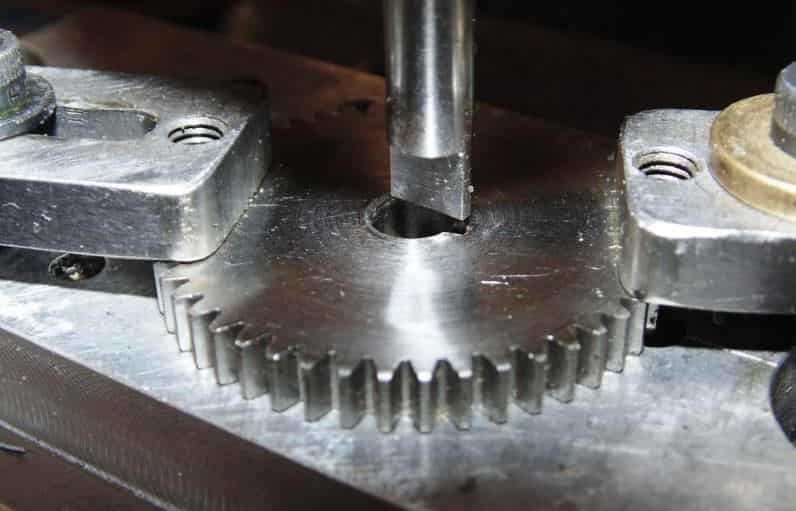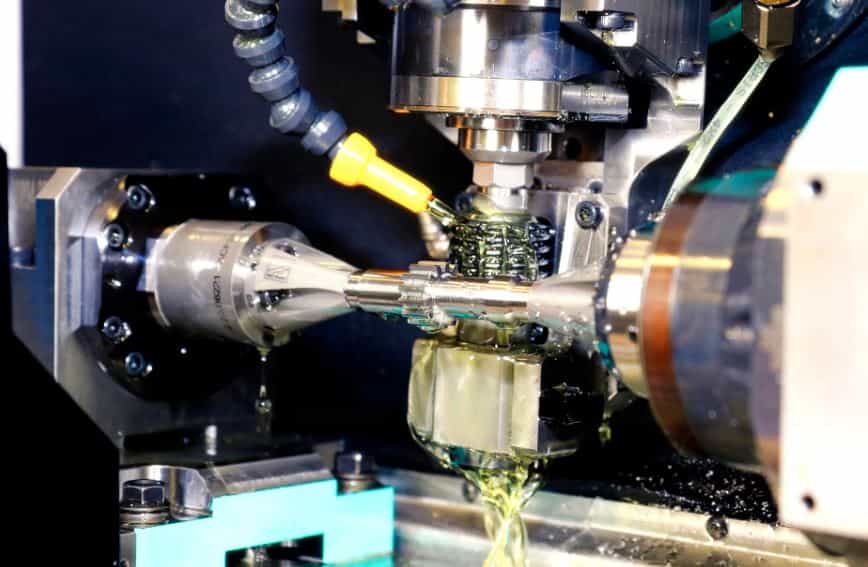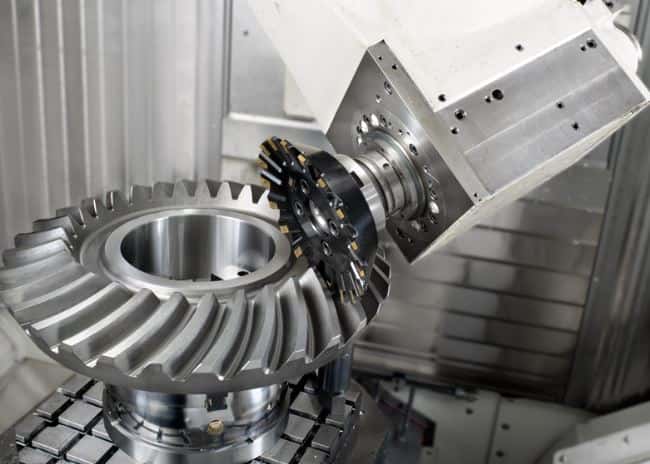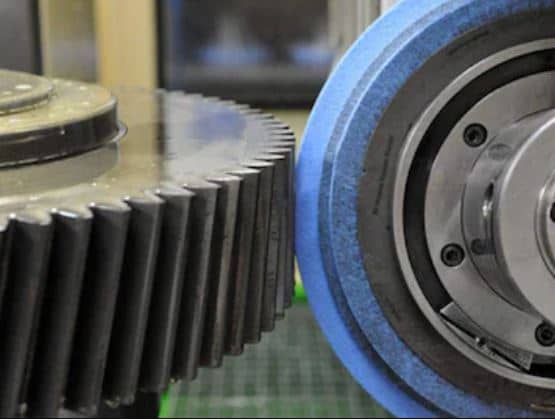In this article, you’ll learn what is Gear Cutting? and how it is done. Its types, working, advantages and disadvantages are explained with pictures. You can also download the PDF file of this article at the end.
What is Gear Cutting?
Gear cutting is the process of machining or creating gears. Toothed gears are essential elements in mechanical power transmission, and their accurate production necessitated the development of intelligent tools and processes.
Gears may be manufactured by casting, stamping, machining, or by powder metallurgical processes. Out of all such processes, the most common and accurate method of production of gears is by hobbling, broaching, milling, and grinding.
Gears are generally made of metal, plastic, and wood. Although gear cutting is necessary, many metal and plastic gears are made without cutting, such as die-casting or injection molding, while some of them require subsequent machining.
The various methods of producing by machining operations are explained below. So Let’s discuss them one by one.
Read Also: Types of Rolling Mills and Their Applications with [PDF]
Gear Cutting Processes
Following are the various gear cutting processes that are used for making gears:
- Gear Broaching
- Gear Hobbing
- Milling gear cutting
- Gear Grinding
- Gear Shaping
- Templet Gear cutting
- Gear Finishing
Don’t miss this: Gear Terminology: Basic terms used In gear & its calculation.
1. Gear Broaching

The most common method of making gears is by broaching which involves cutting out shapes. This usually happens when you move a broach cutting tool through an object. As you move the broach across the object, the tooth size slowly increases to cut the gear of the desired size.
Broaching is an ideal process for making internal gears and splines. A specific broaching tool should be used for each part to ensure the desired output. One benefit of using rotary broaching to make gears is that it can be performed on any CNC lathe, milling, machining center, or other turning machines.
| Advantages of Gear Broaching | Disadvantages of Gear Broaching |
|---|---|
| Broaching process is faster than any other metal cutting process. | The initial cost for customized gear is very high. |
| The broach can be used for both internal and external gear cutting processes. | It is economical for only mass production runs. |
| Using this process, you can easily achieve a good surface finish, high dimensional accuracy, and close tolerances. |
2. Gear Hobbing

Hobbing is a quick and handy process used for gear manufacturing. A gear hobbing machine uses a helical cutting tool or hob that is used to cut teeth into blanks. The speed of this process makes it ideal for large production but works best for medium to high.
This is usually done on a CNC gear hobbing machine, in which a gear blank and the hob are continuously rotated until all gear teeth are cut into the blank. Hobbing highlights for gears are straight, helical, bevel, face, crown, worm, and chamfering. It is the most precise and accurate process of manufacturing gears.
| Advantages of Gear Hobbing | Disadvantages of Gear Hobbing |
|---|---|
| Gear hobbing has a faster production rate and is realized as an economical process as compared to other processes. | This process is not used to generate the internal gear. |
| The process is capable of manufacturing different types of gears such as Spur Gears, Helical Gears, Worms, Splines, Sprockets, etc. | Splines are not suitable to produce with gear hobbing. |
| A wide variety of batch sizes ranging from small to large quantities can be accommodated by this process. |
3. Gear Milling

In this process, the gear cutting is done by using a form cutter on a milling machine. This cutter moves axially to produce gear teeth at the precise length and depth. After cutting a tooth, the cutter is removed to allow the gear blank to rotate to the next position. When the blank is rotated again, the form cutter cuts the next tooth, and this process continues for all teeth that have been cut into the blank.
Usually, this process is slow, which makes it a less production process. This process is used where a small number of gears are to be manufactured and where not much precision is demanded.
| Advantages of Gear Milling | Disadvantages of Gear Milling |
|---|---|
| By using gear milling, you can get precise cuts and results. | It may consume more power during operation. |
| It can do multiple cuts at once and customization is available. | Skilled operators are required to perform processes correctly. |
| Greater accuracy in the completion of work as compared to other procedures. |
4. Gear Grinding

Another process of manufacturing gears is gear grinding. Gear grinding is used to remove surface material through friction on the gear blank. This is done by rubbing a rough surface against a piece of metal at high speed to remove material that is not needed in the gear.
In this process, the small pieces are removed at a time without affecting the overall material. According to the technology used, gear grinding requires proper fabrication of the gear teeth from the gear blank. The gear grinding commonly used in industry consists of two basic technologies, that is, form grinding and generating grinding.
| Advantages of Gear Grinding | Disadvantages of Gear Grinding |
|---|---|
| Due to their distinctive gear geometry, ground gears provide great meshing effectiveness and stable operation. | It takes more time to remove the required amount of work. |
| It works more quietly and also makes more cuts. | The cost of the process and tool is considerably high. |
| They can handle heavy loads and are helpful when large amounts of energy are required. |
5. Gear Shaping
This is the oldest method of gear making, in which gear cutting is mounting a gear blank in the shaper. The tool used in this method is shaped into a tooth profile to cut. The other is the pinion-shaped cutter used in the gear shaper machine. It is used when the cutter looks like a gear cuts a gear blank.
The axis of rotation of the cutter and blank should be parallel to each other. This process is suitable for low and high production. The gear shaping method is mainly used in gear cutting to produce low-quality gears such as spur gears, splines, and clutch teeth.
| Advantages of Gear Shaping | Disadvantages of Gear Shaping |
|---|---|
| Spur, helical, rack, and internal gears can be easily cut by the gear shaping process. | It has less rigidity than gear hobbing. |
| The cutter with the same module can cut gears with different teeth, so the cutter does not depend on the number of teeth on the gear. | The gear or spline should be cut only if the work has a sufficient number of grooves and undercuts. |
| It is perfect for medium and batch production runs. |
6. Templet Gear Cutting
This process involves the production of a gear tooth profile by a single point cutting tool which is reciprocated and made to follow a guide path by a temple whose profile corresponds to the shape of the gear tooth bring cut.
After one tooth is finished, the blank is indexed in the usual manner. The temple method is employed for producing very large spur gear teeth and for cutting accurate bevel gears.
7. Gear Finishing
Gear finishing is the process that uses a rigid rolling die with a very precise tooth profile of the gear to finish. The gear to be finished is in the middle of two dies and all three are reoriented about their axis.
Now, the pressure is applied by both rolling dies on top of the gear to be finished. This process is done to smooth out their engagement surfaces and allow them to perform better over a longer period of time. It is an effective and noiseless operation at high speed. Grinding, lapping, honing, shaving, and burning processes are the traditional gear finishing processes.
Conclusion
As I discussed below, the cutters are essentially used to make gear teeth. These gear cutting processes are based on the principle that any two gears will mesh with the same pitch, proper helix angle, proper tooth depth, and thickness.
Now, I hope you have learned and found something you haven’t heard before. But still, if you have any queries or doubts regarding this article, feel free to ask in the comments, I will respond to you.
So, if you liked this article, then please share it with your friends.
Want free PDFs directly in your inbox? Then subscribe to our newsletter.
Download PDF of this article:
You might like to read more articles on our blog:
- What are Different Lathe Attachments and Accessories? [PDF]
- Whats the difference lies between Up Milling and Down Milling [PDF]
- Types of Extrusion Processes: Their Applications & Advantages
External resource:
This article is very precise and I am reading it at the right time because I am having lectures on the same topic. I may need more material from you. I am a student from Ghana
Glad you found the article useful! Keep visiting.
Hi there,
Wonderful points you have mentioned here. Your post is clearly describing Gear Cutting ,and these types, advantages and disadvantages. It is very informative and educative. I really appreciate it.
Keep update it…
Thanks for your valuable feedback.
Write about something what is steel cut wire shots
Sure, thanks for suggesting.
so good i love this program so much please keep on updating me always am a mechanic too.
Godfrey
Uganda
Sure will do. Thanks for reading our article.
so good.
Thanks
Thanks so much for all I have received from you guys, there are indeed helpful and educative. God bless you guys and more grace.
I’m glad you liked it. Thanks for reading and keep visiting.